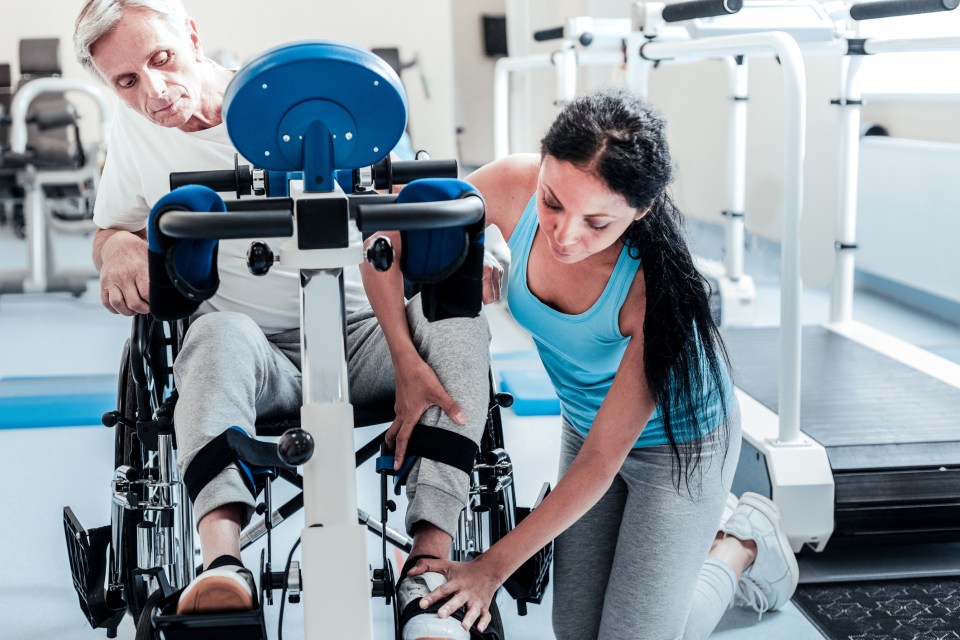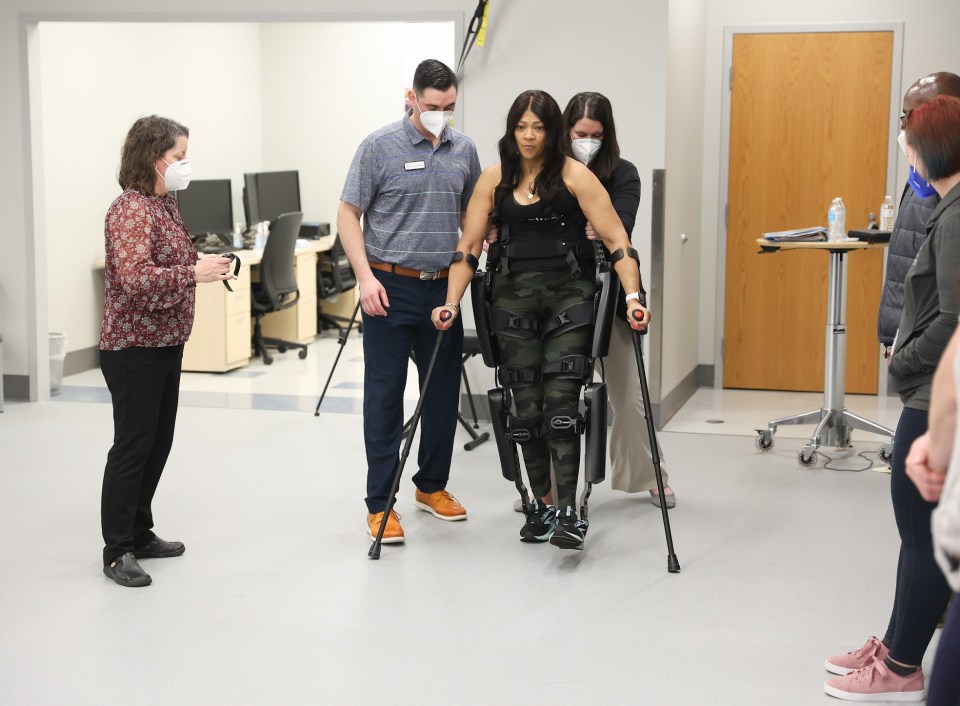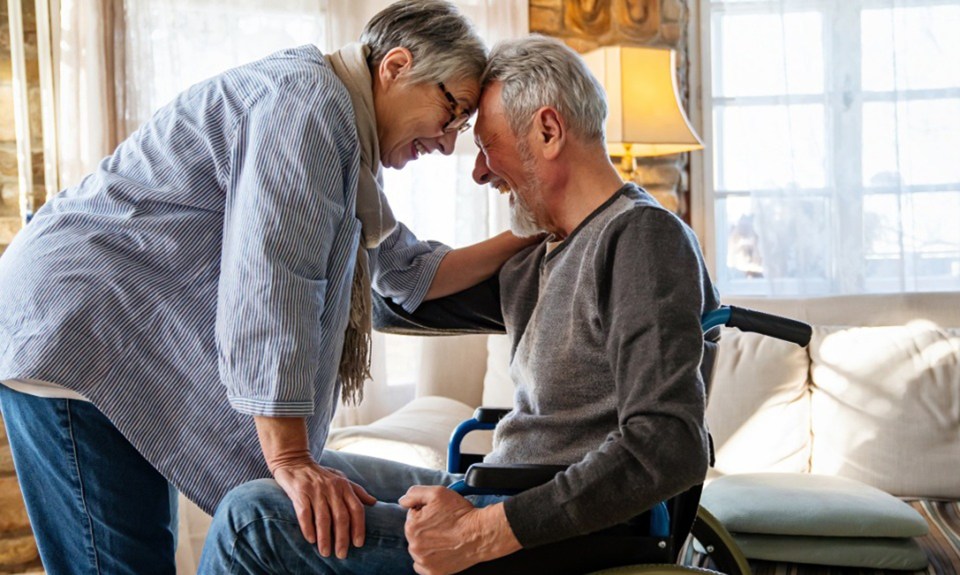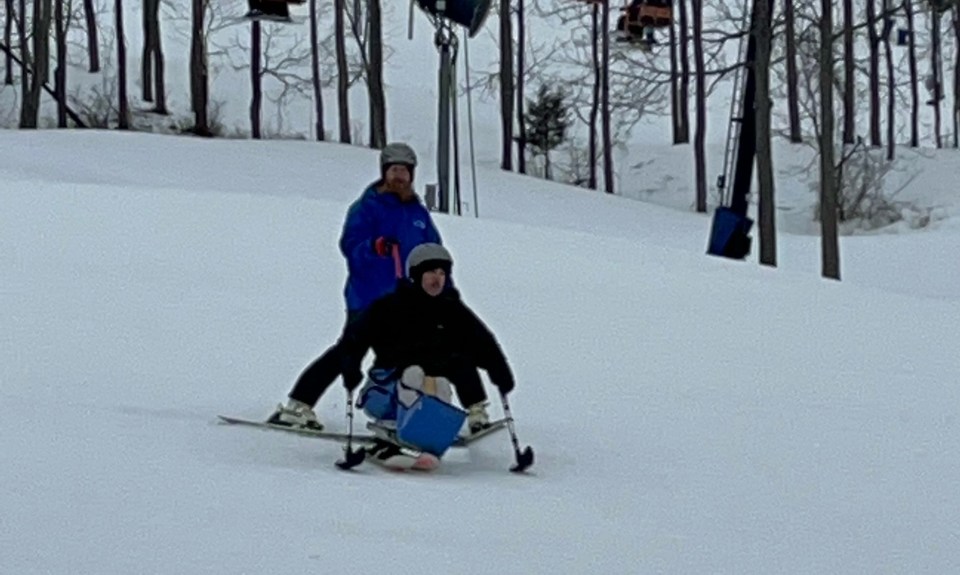Spinal cord injury can tremendously change an individual’s life
The loss of sensation is only one of a myriad of physical consequences of spinal cord injury, so the care of person with a spinal cord injury is not limited to the treatment of the injury itself.
Medical consequences as a result of such an injury may include the development of respiratory failure or loss of bladder control, which can result in complications such as pneumonia and urinary tract infections. In addition, the psychological impact of this change in circumstance is significant, with many spinal cord injury patients experiencing depression and anxiety.
However, once the milestone of returning home with a spinal cord injury is crossed, the individual must conquer the barriers of returning to society, which is why inpatient rehabilitation is an important element towards achieving a fulfilling and active life after spinal cord injury.
Not only can an inpatient rehabilitation hospital stay focus on recovery from the injury and returning the patient home as independently as possible, but it may also include techniques such as performing range of motion, strengthening weakened muscles and retraining the bladder and bowel function.
What to expect in the acute care setting
Management of a spinal cord injury begins at the area impacted by the accident. Techniques used in stabilizing, moving and managing the patient immediately following the trauma can influence the prognosis significantly.
While hospitalized during the acute stage of recovery with immobilization in place, the patient may be on a period of bedrest. The primary goal of rehabilitation is to prevent secondary complications, provide patient education and begin early mobilization when medical clearance is achieved. The early interventions include respiratory management, skin care, early strengthening and range of motion.
The overarching goal of physical rehabilitation is for the patient at the acute hospital to become as independent as possible and to achieve the functional mobility necessary for everyday living, work and recreation. Independent mobility can be achieved in a way that:
- Uses new movement strategies to compensate for neuromuscular impairments
- Uses the neuromuscular system to accommodate the task with a movement pattern similar to that before the injury
Role of inpatient rehabilitation for spinal cord injury patients
Most people with a new spinal cord injury will need inpatient rehabilitation to gain independence and learn new ways to do activities of daily living. After completing rehabilitation in the acute care hospital, social workers usually guide the patients and their families in making choices for various inpatient rehabilitation facilities.
Choosing the right facility
It is best if a loved one can help make the final decision on which rehabilitation center is right for a patient. Families can tour inpatient rehabilitation hospitals and ask questions pertaining to spinal cord injury rehabilitation to get a feel for the facility and whether it would be a good fit for their family member. Videos tours of the inpatient rehabilitation facility may also be available if the family cannot tour it themselves.
Questions to ask in finding the right inpatient rehabilitation hospital:
- Number of spinal cord injuries treated in past year
- Average length of stay in the facility for a spinal cord injury
- Patient to nurse ratio
- Therapy intensity
- Evaluations and recommendations for a person needing specialized equipment and wheelchairs
- The inpatient rehabilitation hospital’s emergency plans
- Daily schedules for the spinal cord injury patients
- Post-discharge follow up services and recommendations
What to expect when you are admitted
Patients typically move to an inpatient rehabilitation hospital during the active rehabilitation phase where the patient is medically stable and is ready to achieve the goals toward independence. This is a critical time for recovery because many of the motor skill gains the patient will make occur during this time. Improvements made during this period can set the stage for the patient’s recovery afterwards. While all spinal cord injury patients require rigorous physical and occupational therapy, the injuries and pace of the recovery are unique to each person. An individualized plan is usually designed in inpatient rehabilitation hospitals to help the patient maximize their recovery.
Patients admitted for intensive rehabilitation program means they can tolerate 15 hours of therapy a week. The program usually consists of a mix of physical and occupational therapy sessions depending on the patient’s needs. The patient’s family or caregiver should accompany the patient during physical therapy and occupational therapy sessions and will receive training on how to assist or guide the patient at home. A support system is a crucial component in optimizing rehabilitation for the patient.
Traditionally, management of the spinal cord injury patients involved the determination of the person’s level of injury and functional capacity and then the generation of a problem list and prescription of therapies, with an overall goal of having the patient achieve his or her maximum potential. Based on this, various therapies including muscle strengthening, range of motion exercises, transfer training, gait training and activities of daily living training are pursued, generally through an interdisciplinary team approach.
One area that has received significant attention in past few years is the use of body- weight supported training. Recovery of walking ability is one of the most common goals expressed by people with SCI. Many studies have proved that most patients with ASIA D and C SCI regain the ability to walk.
Educational Opportunities in Inpatient Rehabilitation
Inpatient rehabilitation facilities offer plenty of educational opportunities. A spinal cord injury is a major life event that leads to serious physical disabilities and secondary medical complications and impact life satisfaction. Studies have shown that life satisfaction improved in most of the spinal cord injury patients during inpatient rehabilitation, especially during first three months of active rehabilitation and remained stable during the first year after discharge. Recovery of life satisfaction is usually attributed to improved functional independence, physical capacity, wheelchair mobility, etc.
In inpatient rehabilitation, patients go through educational sessions with therapy and nursing on:
- Fall prevention
- Fall recovery
- Wheelchair mobility skills and transfers
- Energy conservation techniques
- Bladder and bowel management
Peer counseling
Peer counseling sessions are available for the patients with SCI in inpatient rehabilitation settings. Studies have shown that patient who receive peer counseling sessions experienced it as solution-oriented, practical and empowering. They appreciate the authentic, open demeanor of the peer counselors and conversations about recreational activities, hobbies and interests, support and the development of interpersonal relationships. The regular presence of all peer counselors in the hospital facilitate easier exchange with the patients.
Discharge planning and community reintegration
An important aspect of rehabilitation involves planning for discharge and community reintegration. Consideration is given to multiple issues, including accessible housing, nutrition, transportation, maintaining functional skills and level of physical fitness. Each of these issues should be addressed early and continuously throughout a patient’s stay in an inpatient rehabilitation hospital in consultations with the patient, family and appropriate care team members.
References
- Physical Rehabilitation: Susan B O’Sullivan
- Sipski, Marca L., Richards J Scott. Spinal cord injury Rehabilitation: State of the science
- Fehling MG. Recommendations regarding the use of methylprednisolone in acute spinal cord injury: Making sense out of controversy. Spine 2001; 26: S56-7
- Argy Stampas, MD. Recovering from Spinal Cord Injury: treatment stages.
- P Rinkaewkan, V Kuptniratsaikul. The effectiveness of inpatient rehabilitation for spinal cord patients in Siriraj hospital. Spinal cord 2015;3, 591-597
- Flett HM, Delparte JJ, Scovil CY. Determining Pressure injury risk on admission to inpatient spinal cord injury rehabilitation: A comparison of the FIM, spinal cord injury pressure ulcer scale, and Barden scale. Arch Phys Med Rehab 2019; May 1
- Michal S. Atkins, Jane M. Baumgarten.Mobile arm supports: Evidence based benefits and criteria for use. J Spinal cord med. 2008; 31: 388- 393
- Van Koppenghan, Casper F. MD. Recovery of life satisfaction in persons with spinal cord injury during inpatient rehabilitation. American Journal of Physical Medicine and Rehabilitation. Nov 2009; 88(11). 887-895.
- Roth K, Mueller G, Wyss A. Experiences of peer counselling during inpatient rehabilitation of patients with spinal cord injury. Spinal cord Ser Cases 2019 Jan 15, 5:1
The content of this site is for informational purposes only and should not be taken as professional medical advice. Always seek the advice of your physician or other qualified healthcare provider with any questions you may have regarding any medical conditions or treatments.



